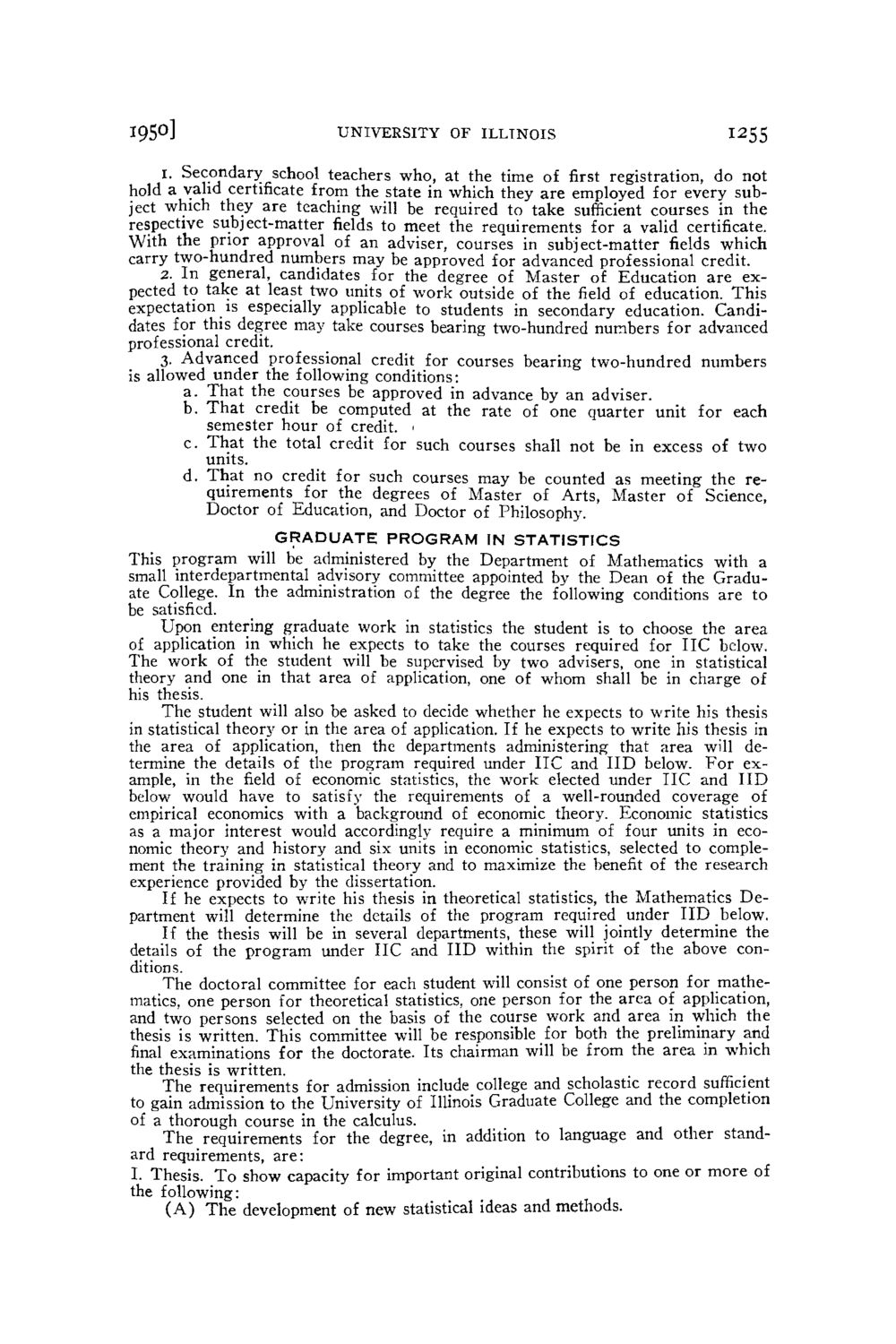| |
| |
Caption: Board of Trustees Minutes - 1950
This is a reduced-resolution page image for fast online browsing.

EXTRACTED TEXT FROM PAGE:
1950] U N I V E R S I T Y OF I L L I N O I S 1255 1. Secondary school teachers who, at the time of first registration, do not hold a valid certificate from the state in which they are employed for every subject which they are teaching will be required to take sufficient courses in the respective subject-matter fields to meet the requirements for a valid certificate. With the prior approval of an adviser, courses in subject-matter fields which carry two-hundred numbers may be approved for advanced professional credit. 2. In general, candidates for the degree of Master of Education are expected to take at least two units of work outside of the field of education. This expectation is especially applicable to students in secondary education. Candidates for this degree may take courses bearing two-hundred numbers for advanced professional credit. 3. Advanced professional credit for courses bearing two-hundred numbers is allowed under the following conditions: a. That the courses be approved in advance by an adviser. b. T h a t credit be computed at the rate of one quarter unit for each semester hour of credit. 1 c. That the total credit for such courses shall not be in excess of two units. d. That no credit for such courses may be counted as meeting the requirements for the degrees of Master of Arts, Master of Science, Doctor of Education, and Doctor of Philosophy. GRADUATE PROGRAM IN STATISTICS This program will be administered by the Department of Mathematics with a small interdepartmental advisory committee appointed by the Dean of the Graduate College. In the administration of the degree the following conditions are to be satisfied. Upon entering graduate work in statistics the student is to choose the area of application in which he expects to take the courses required for I I C below. The work of the student will be supervised by two advisers, one in statistical theory and one in that area of application, one of whom shall be in charge of his thesis. The student will also be asked to decide whether he expects to write his thesis in statistical theory or in the area of application. If he expects to write his thesis in the area of application, then the departments administering that area will determine the details of the program required under I I C and I I D below. F o r example, in the field of economic statistics, the work elected under I I C and I I D below would have to satisfy the requirements of a well-rounded coverage of empirical economics with a background of economic theory. Economic statistics as a major interest would accordingly require a minimum of four units in economic theory and history and six units in economic statistics, selected to complement the training in statistical theory and to maximize the benefit of the research experience provided by the dissertation. If he expects to write his thesis in theoretical statistics, the Mathematics Department will determine the details of the program required under I I D below. If the thesis will be in several departments, these will jointly determine the details of the program under IIC and I I D within the spirit of the above conditions. The doctoral committee for each student will consist of one person for mathematics, one person for theoretical statistics, one person for the area of application, and two persons selected on the basis of the course work and area in which the thesis is written. This committee will be responsible for both the preliminary and final examinations for the doctorate. Its chairman will be from the area in which the thesis is written. The requirements for admission include college and scholastic record sufficient to gain admission to the University of Illinois Graduate College and the completion of a thorough course in the calculus. The requirements for the degree, in addition to language and other standard requirements, are: I. Thesis. T o show capacity for important original contributions to one or more of the following: ( A ) T h e development of new statistical ideas and methods.
| |